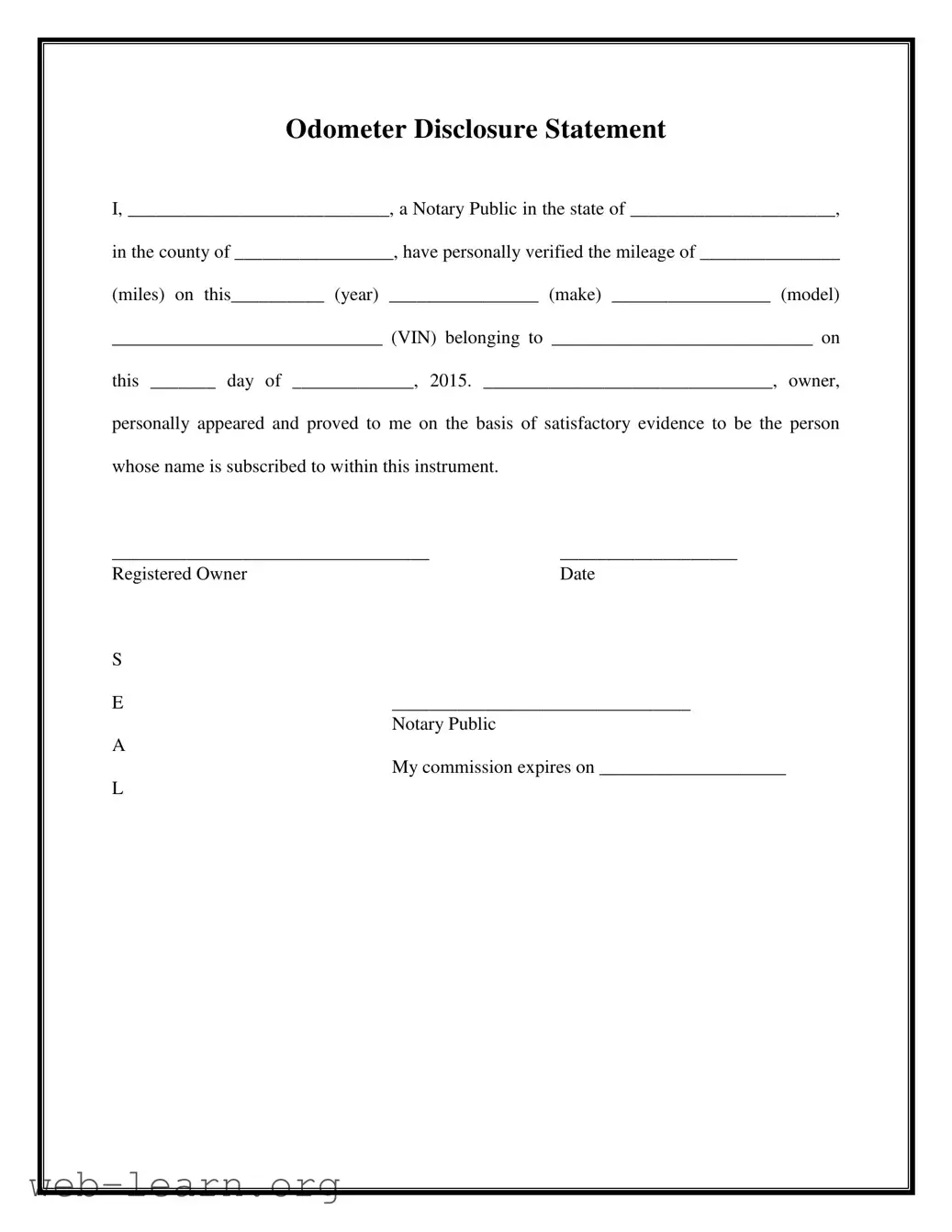Blank Notarized Odometer Statement Form
The Notarized Odometer Statement is a legal document affirming the accuracy of a vehicle's mileage at the time of transfer. This form, completed by a notary public, provides assurance to buyers and sellers regarding odometer readings, minimizing disputes over a vehicle's history. Understanding its importance can help facilitate smoother transactions in the sale or purchase of automobiles.

